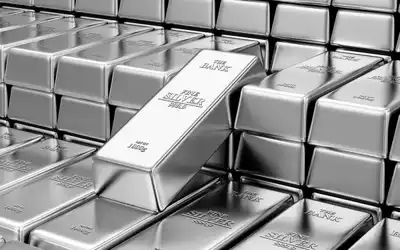The contrast between the gold and silver markets is striking, with the gold market significantly overshadowing its silver counterpart. While size doesn’t always equate to superiority, it often holds true in the context of markets. The total value of all silver in the world is estimated to be around $17 billion, which pales in comparison to the vast $8 trillion circulating in gold.
Interestingly, certain cryptocurrencies have even surpassed the market value of silver, with Bitcoin surging to several times its size. The relatively small size of the silver market has lured some individuals to take substantial positions in it, like the infamous Hunt Brothers. There are even individuals whose personal wealth surpasses the entire value of the silver market, leading them to invest billions into it.
On the other hand, the largest governments in the world hold much larger positions in gold without causing a significant impact on its market. However, certain silver plays have demonstrated the potential to drive the price of silver up due to its smaller market size, indicating the practical consequences of such disparities.
Although silver could theoretically experience higher volatility if people turned to it during times of poor performance in other investments or economic uncertainties, this scenario doesn’t commonly occur. The risks associated with such investments in silver are real and can deter mass flocking towards the metal as it happens with gold.
Silver’s Volatility Tends to be Overstated
Silver’s reputation for volatility is not entirely unfounded, but the risks involved in acquiring large positions in proportion to the market size serve as a deterrent. One of the main reasons why huge investments in silver are relatively rare is that gold remains the preferred investment during uncertain times. People don’t flock to silver with billions of dollars as they do with gold.

While memories of silver’s massive run-up in 1980, driven by the Hunt Brothers’ attempt to corner the market, may contribute to its perceived volatility, the reality is that silver’s value is tied more closely to its industrial usage than gold’s. Investors could potentially overwhelm industrial demand, but market dynamics, historical sharp declines after significant price increases, and its industrial value act as benchmarks that lead to price crashes.
In fact, silver is more renowned for its drops than its rises, sometimes losing a substantial portion of its value over a relatively short period. For instance, between 2011 and 2015, silver lost almost 80% of its value and has not seen a strong recovery since then.
Due to its tendencies, investing in silver requires a cautious approach, much like trading in the stock market. Both silver and gold investments are influenced by inflows and outflows based on their relative attractiveness compared to other investments, as seen during the current stock market bull market.
The movement of money in precious metals tends to be more conservative, with some investors taking a more cautious stance and shifting towards precious metals like gold and silver when they perceive a decline in the stock market. However, when the prices of precious metals begin to drop, these investors are often motivated to move back into other assets.
Both gold and silver can be highly volatile, challenging the notion that gold is a more stable investment. Recognizing and accounting for this potential volatility is crucial when investing in either metal. It requires a trading mentality, closely monitoring performance and being willing to exit positions to manage risk and avoid excessive losses.
Changes in Price Over Time With Silver and Gold
The silver market benefits from certain influences that help stabilize its price when it experiences significant declines. Unlike gold, a higher percentage of silver is used for non-investment purposes, making its price valuable to industrial users, stimulating demand even when investors are exiting.
Historically, the floor for silver’s price, adjusted for inflation, has been in the range of $5-$6 per ounce. When examining precious metals and other investments, it’s essential to consider inflation-adjusted charts to gain a clearer perspective of their performance over time. Surprisingly, over the long term, silver’s price has not significantly increased and has hovered around $16 an ounce for the past century. Silver exhibits a strong “reversion to the mean” effect, suggesting that when its price rises, a subsequent decline is expected, and vice versa. This contrasts with stocks, where the expectation is long-term growth.
Silver’s price movements can be sustained but highly unpredictable, which calls for cautious attention from investors and traders. While there are opportunities on the long side during pullbacks, they are limited in magnitude and duration. Trading silver can be challenging due to its volatile nature, and investors often find it more suitable to pay attention to longer-term trends.
Silver’s price charts tend to be more discernible and less subject to significant fluctuations compared to gold, which makes it more attractive for timing investments. The speculative nature of silver’s price movements offers opportunities for both long and short positions as the situation demands. Unlike gold, there is no significant long-term upward bias with silver.
While gold is typically viewed as a more upscale investment, those willing to embrace a bit more adventure may find opportunities and profits in investing or trading silver. It’s important to recognize the potential for both gains and risks in the silver market and approach it with a balanced perspective.




